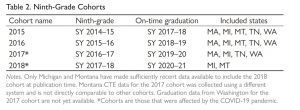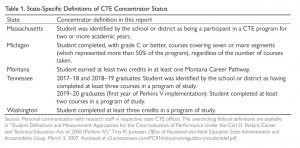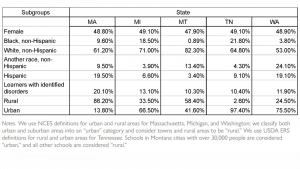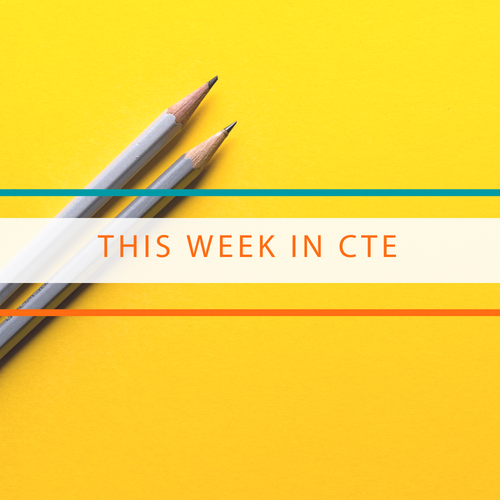 Over the last two weeks, the U.S. Secretary of Labor Marty Walsh testified before Congress on the U.S. Department of Labor’s (DOL) federal fiscal year 2023 (FY23) budget request while lawmakers in the House advanced FY23 appropriations legislation with implications for Career Technical Education (CTE) funding. Advance CTE also endorsed legislation aimed at promoting career awareness this week, while the Senate held a hearing on the pandemic’s impact on students’ learning. In addition, the Federal Communications Commission disbursed additional connectivity funds as part of a wider effort to provide affordable access to high-quality internet connections and devices, while the U.S. Department of Education (ED) published new rules for Title IX.
Over the last two weeks, the U.S. Secretary of Labor Marty Walsh testified before Congress on the U.S. Department of Labor’s (DOL) federal fiscal year 2023 (FY23) budget request while lawmakers in the House advanced FY23 appropriations legislation with implications for Career Technical Education (CTE) funding. Advance CTE also endorsed legislation aimed at promoting career awareness this week, while the Senate held a hearing on the pandemic’s impact on students’ learning. In addition, the Federal Communications Commission disbursed additional connectivity funds as part of a wider effort to provide affordable access to high-quality internet connections and devices, while the U.S. Department of Education (ED) published new rules for Title IX.
Labor Secretary Walsh Testifies on USDOL FY23 Budget Request
Last week U.S. Secretary of Labor Marty Walsh testified before the House Education and Labor Committee and the Senate Appropriations Committee regarding his Department’s FY23 budget request. Secretary Walsh and members of the committees discussed a wide range of topics including apprenticeship programs and other issues impacting workforce development efforts. Archived webcasts of these hearings, including testimony, can be found here and here.
House Lawmakers Release and Markup FY23 Education Funding Bill
On Thursday, June 23, the House Appropriations Committee’s Subcommittee on Labor, Health and Human Services, Education, and Related Agencies held a hearing to consider and markup the FY23 Labor, Health and Human Services, Education, and Related Agencies Bill. If enacted the bill would provide a 13 percent increase for ED and a nearly 12 percent increase for DOL over FY22 enacted funding levels. According to a preliminary summary document from the committee, the legislation proposes a $45 million increase for the Carl D. Perkins Act (Perkins V) basic state grant program — a 3.3 percent increase over FY22 enacted levels. The bill would also provide an additional $75 million for Student Support and Academic Enrichment state grants– a program authorized under Title IV-A of the Every Student Succeeds Act. In addition, the legislation proposes significant increases to core formula programs authorized under the Workforce Innovation and Opportunity Act (WIOA) as well as for apprenticeship programs.
Late Thursday evening the subcommittee advanced this legislation by voice vote for further consideration by the full House Appropriations Committee—a next step that is currently scheduled for June 30. An archive webcast of the markup, including bill text, can be found here. Additional details about this spending package are still forthcoming and Advance CTE anticipates having additional clarity regarding the committee’s priorities next week ahead of the full committee markup.
Advance CTE Endorses Career Counseling and Awareness Legislation
This week, Representative Glenn “GT” Thompson (R-PA) and Derek Kilmer (D-WA) introduced the Creating Opportunities to Thrive and Advance Act (COTA)– legislation that, if enacted, would expand career counseling and awareness efforts funded by WIOA. Specifically, the legislation would allow certain WIOA funds to be used to allow for public outreach efforts highlighting CTE programs that lead to in-demand occupations and sectors. Advance CTE endorsed this legislation this week with the organization’s Executive Director Kimberly Green commenting, in part, “Understanding the career options available in high-growth, high-wage and in-demand fields is crucial for success in today’s economy. Advance CTE commends the introduction of this legislation which will promote awareness of the Career Technical Education programs that lead to these opportunities, helping to ensure more learners are empowered to pursue rewarding careers now and in the future.” More information about the bill can be found here.
Senate HELP Committee Holds Pandemic Learning Hearing
On Wednesday, June 22, the Senate Health, Education, Labor, and Pensions (HELP) Committee held a hearing titled “Supporting Students and Schools: Promising Practices to Get Back on Track.” The hearing focused on the impact of the pandemic on student learning and how schools are working to reverse student learning loss and get them back on track. During the question and answer portion of the hearing, Senator Jacky Rosen (D-NV) raised the issue of teacher shortages in critical areas such as CTE. She noted, in part, that “in Nevada, we’re hearing that we have about 1500 CTE educator positions, currently unfilled due to insufficient resources” and asked witnesses how best this persistent challenge could be addressed moving forward. An archived webcast, including witness testimony, can be accessed here.
ED Proposes New Title IX Rule
On Thursday, June 23, the U.S. Department of Education proposed a set of changes to Title IX regulations—rules that are intended to prohibit sex discrimination at federally funded schools. The announcement coincides with the 50th anniversary of the Title IX and would expand these protections for transgender students among a host of other changes that determine how K-12 and postsecondary institutions must respond to complaints of sexual discrimination, harassment, or assault. The proposal will be published on the Federal Register soon, with ED inviting the public to comment and provide feedback on the proposal. In the meantime, an unofficial version of the proposal can be accessed here.
ED Hosts Pathways Event
On Tuesday, June 21, the U.S. Department of Education hosted a virtual event titled “Pathways in Action.” The event convened experts and stakeholders including community colleges, employers, school districts, workforce development boards, and community-based organizations to share perspectives and best practices for how to advance high-quality career and college pathways for more learners. The event also emphasized the various roles that federal agencies have in implementing these pathways efforts as well as identifying areas where more improvements are needed to ensure that each learner can benefit from these opportunities. The convening is part of ED’s wider efforts to promote a proposed “Career Connected High Schools” initiative as part of its FY23 budget request. More on the event can be found here.
DOL Hosts Good Jobs Summit
Also on Tuesday, June 21, the U.S. Department of Labor hosted a “Good Jobs” summit– a full day event highlighting how the Biden Administration is administering and prioritizing job quality through federal investments. The summit featured the release of a “Good Jobs Principles” which identifies specific aspects of what constitutes quality employment. Launched at the start of 2022 and led by DOL, the Good Jobs initiative is a multi-agency effort to promote and improve quality employment opportunities for more workers. More information can be found here. In addition to these efforts, President Biden recently announced a Talent Pipeline Challenge which encourages stakeholders to commit to supporting workforce development efforts, including aspects of these ongoing initiatives.
FCC Announces New Funding Commitments
Recently, the Federal Communications Commission (FCC) announced the first wave of funding commitments from its most recent third filing window for the Emergency Connectivity Fund (ECF). Created as part of the American Rescue Plan, the ECF Program allows eligible schools and libraries to apply for financial support to purchase connected devices like laptops and tablets, Wi-Fi hotspots, modems, routers, and broadband connectivity to serve unmet needs of students, school staff, and library patrons at home during the COVID-19 pandemic. Securing initial funding for the ECF was one of Advance CTE’s legislative priorities during the public health emergency. This new wave of funding includes over $244 million in funds to support 259 schools, 24 libraries and 1 consortium. $5.1 billion in total funding has been approved to date as part of previous ECF funding windows.
Steve Voytek, Policy Advisor
 Prior to Thanksgiving, Congress passed another short-term extension of federal fiscal year 2023 (FY23) funding. The continuing resolution (CR) bifurcated the 12 individual spending bills that fund federal operations into two separate groups, each with a different expiration date. Of note for the Career Technical Education (CTE) community, the Labor, Health and Human Services, Education and Related Agencies (Labor-HHS-ED) appropriations component of this legislation would extend funding for programs like the Carl D. Perkins Career and Technical Education Act (Perkins V) through February 2, along with seven other funding bills, while four other funding measures are set to expire on January 19 of next year.
Prior to Thanksgiving, Congress passed another short-term extension of federal fiscal year 2023 (FY23) funding. The continuing resolution (CR) bifurcated the 12 individual spending bills that fund federal operations into two separate groups, each with a different expiration date. Of note for the Career Technical Education (CTE) community, the Labor, Health and Human Services, Education and Related Agencies (Labor-HHS-ED) appropriations component of this legislation would extend funding for programs like the Carl D. Perkins Career and Technical Education Act (Perkins V) through February 2, along with seven other funding bills, while four other funding measures are set to expire on January 19 of next year.




 Developed with input from nearly 200 national, state and local education and workforce development leaders and supported by 40 national organizations,
Developed with input from nearly 200 national, state and local education and workforce development leaders and supported by 40 national organizations,